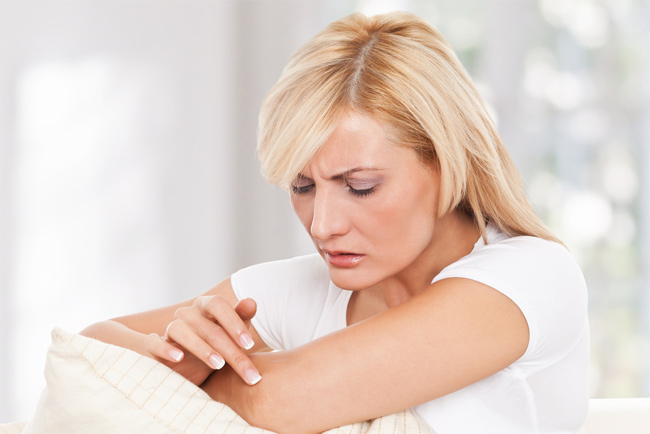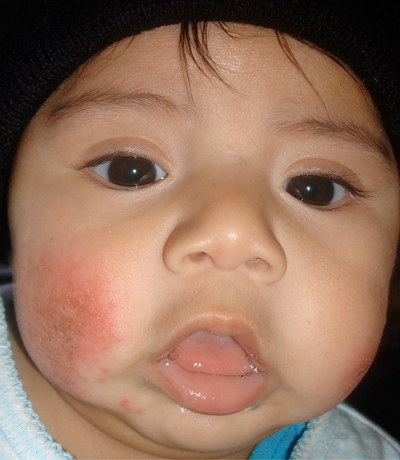Dry / Sensitive Skin
If you look in Webster’s dictionary, there is no good definition for the term “sensitive skin,” but those of you who have it sure know what it is. Babies, children, teens, adults, and seniors with sensitive skin often feel uncomfortable because their skin itches and may feel crawly or tingly. Sensitive skin is skin that can dry out, ever so easily. Moisture is not retained. Sensitive skin will react to most contact allergens. Any little thing will set it off. Here is helpful information about Dry – Sensitive Skin.


Eczema
- • Rashes (often called dermatitis or eczema) have many causes, including allergic reactions, friction, prolonged exposure to heat and moisture, or contact with irritants, such as harsh chemicals
- • For more information on common skin conditions that cause rashes, visit the Eczema section of Dermatology A to Z at www.aad.org.
- • See your dermatologist for successful diagnosis and treatment of eczema.
Allergic Contact Dermatitis
- • The itching and blistering of allergic contact dermatitis can occur after contact with an allergen, a substance that causes an allergic reaction. These reactions typically appear within a few days of exposure.
- • Poison ivy, poison oak, and poison sumac are the most common causes of allergic reactions in the United States. Each year, millions of Americans will be affected by contact with these poisonous plants.
- • Other common causes of allergic contact dermatitis include metals such as nickel, rubber, dyes, cosmetics, preservatives. and fragrances.
- • Treatment to relieve symptoms includes identification and removal of the potential allergens to prevent future reactions. Corticosteroids and topical immunomodulators Itacrolimus or pimecrolimus) may be prescribed to lessen symptoms. Additional treatment options are available for recurrent/persistent forms of allergic contact dermatitis.
Atopic Dermatitis
- • Atopic dermatitis, the most common form of eczema, is frequently described as “the itch that rashes.” It is characterized by patches of dry, red skin that may have scales and/or crust. Often, there is intense itchiness and scratching.
- • Eczema usually occurs on the face, neck, and the insides of the elbows, knees, and ankles.
- • Approximately 10 to 20% of young children ages 10 and under in the United States, and 1 to 3% of adults of the world population develop atopic dermatitis.
- • In the United States alone, it affects at least 28 million people of all ages.
- • An estimated 60% of people with the condition develop it in their first year of life, and 90% develop it before age five.” However, atopic dermatitis can begin in puberty or later.
- • While there is not a cure for atopic dermatitis. most cases can be controlled with proper treatment. The goals of treatment are to keep the skin moist, reduce inflammation and the risk of infection, and minimize the itch associated with the rash.
- • Effective treatment often requires a multi.faceted treatment plan that includes medication, proper skin care, trigger avoidance, and coping mechanisms.
- • Treatment to relieve symptoms may include:
- • Moisturizers to help relieve dry skin.
- • Cold compresses applied directly to the skin to help relieve the itch.
- • Corticosteroids to help reduce inflammation.
- • Topical tacrolimus and pimecrolimus also may be used to reduce inflammation.
- • Sedative antihistamines to help the patient get a good night, sleep.
- • Phototherapy, or immune-suppressing oral medications, can help relieve some moderate to severe cases that do not respond to other therapies.

